There are several planned railway lines in Rwanda, including a line to Tanzania. [1] [2] Historical railways are limited to three industrial railways.
There are several planned railway lines in Rwanda, including a line to Tanzania. [1] [2] Historical railways are limited to three industrial railways.
The Belt and Road Initiative was unveiled by Xi Jinping in late 2013, and was thereafter promoted by Premier Li Keqiang during state visits to Asia and Europe. A railroad will be created to link Kigali, the capital of Rwanda, to the port of Mombasa in Kenya.
Rwanda has only ever had three 600 mm (1 ft 11+5⁄8 in) narrow gauge industrial railways. None of them has ever offered passenger services.
The industrial railways were operated initially by:
Until 1988, all three of these businesses were united as the Régie d’Exploitation et de Développement des Mines (RÉDEMI), which also operated the three railways. However, in the ensuing 20 years the railways were severely damaged by the Rwandan Civil War and Rwandan genocide. It may well be that they are no longer in operation.
Since around the turn of the 21st century, there have been several proposals for a railway between Rwanda and neighbouring countries. The existing railway networks in nearby Uganda, Kenya and Tanzania use 1,000 mm (3 ft 3+3⁄8 in) metre gauge , but TAZARA and other nearby countries, including the Democratic Republic of the Congo (DRC) use the 3 ft 6 in (1,067 mm) gauge, leading to some potential difficulties.
As early as the 1980s, the Kagera Basin Organization carried out economic feasibility studies into a would-be KBO railway system linking Burundi, Rwanda and the DRC, but that proposed system never came to fruition. [3]
In 2000, the Common Market for Eastern and Southern Africa (COMESA) launched the Great Lakes railway project involving both rail and water transport on Lakes Tanganyika, Kivu, and Edward connecting Burundi, the DRC, Rwanda, Uganda, and Zambia. The aim of that project was to improve connections between the Great Lakes and the southern African 3 ft 6 in (1,067 mm) gauge rail network. [3] [4] COMESA commissioned a South African engineering firm, Makhosi Holdings, to carry out a feasibility study into several Great Lakes railway project routes agreed by COMESA members. [5]
Simultaneously, another team of South African engineers was engaged by COMESA to undertake a feasibility study for an alternative rail link in Rwanda, running 150 kilometres (93 mi) southeast from Kigali to Isaka, where it would have connected with the existing metre gauge Tanzanian railway network. [5] As with the would-be KBO railway system, however, the COMESA proposals were not implemented.
By 2004, the newly founded Northern Corridor Transit and Transport Coordination Authority, based in Mombasa, Kenya, was promoting a project to link Kisangani with Mombasa using a new line from Kasese to Kisangani, with feeder lines linking Kasese with Goma and then via Bukavu to Kigali and Bujumbura. [3] [4] [6] Two years later, at a meeting in August 2006 with members of the Rwanda Patriotic Front, Wu Guanzheng confirmed the intention of the People's Republic of China to fund a study into the feasibility of constructing a railway connecting with the Tanzanian railway network at Isaka, and running via Kigali in Rwanda through to Burundi. [7]
In 2000 Burundi and Rwanda announced plans to build a rail line linking their two countries to the Tanzanian rail network, and thus to the Indian Ocean port of Dar es Salaam.
According to the Rwanda News Agency the African Development Bank was responsible for a 2006 delay in surveying the route of a rail link from Isaka through Rwanda's capital Kigali to Bujumbura. [8] The initial feasibility study was to cost $2.7 million. According to the Rwandan News Agency officials stated the African Development Bank was to have loaned 90% of the cost of the railway, with the remainder paid by Tanzania and Rwanda.
The Rwanda News Agency reported that an Indian firm named RITES was expected to take over the contract for the management of the Isaka line. [8]
A delegation from the American railroad BNSF also met with President Paul Kagame to discuss a route from Kigali to Isaka and at the same time the government announced that it had selected a German consulting company to undertake pilot work for the proposed mail line. [9]
China had played a big role in building the TAZARA part of Tanzania's rail network, and in 2007 conducted a survey for extending the network into Rwanda.
On January 26, 2008 Rwanda's President announced plans for BNSF Railway to build a link from Rwanda's capital Kigali to Tanzania's rail network in Isaka, Tanzania. [2] [10] Some reports state the new line would be a narrow gauge, like the rest of Tanzania's rail service. Other reports state that Tanzania has already decided to upgrade its Isaka line to standard gauge, and that the Isaki-Kigali link would also be standard gauge. Yet other reports state that the Isaka-Rwanda leg would be of standard gauge and that cargo would be transshipped to different rolling stock in Isaka.
According to Reuters political unrest in neighboring Kenya has disrupted the reliability of road and rail service through Kenya, and the Rwandan line would allow rail transport to bypass Kenya if rail transport was disrupted there in future. [2]
The proposed plan was projected to be complete by 2013. Projected costs have not yet been announced. [2]
More plans are being made for a link from Uganda. [11]
Opening ceremony in November 2013 for standard gauge railway from Mombasa, Kenya via Nairobi and Kampala to Rwanda and Burundi. [12] [13]
On 31 May 2008, a proposal to link the railways of Egypt, 1,435 mm (4 ft 8+1⁄2 in) gauge, and Sudan, 1,067 mm (3 ft 6 in) gauge, surfaced, with "Technical measures" to overcome the break of gauge. What exactly these technical measures are was not revealed, but they presumably could be used on the new line to Kigali. [17] [ failed verification ]
There are a number of systems of transport in Burundi, including road and water-based infrastructure, the latter of which makes use of Lake Tanganyika. Furthermore, there are also some airports in Burundi.
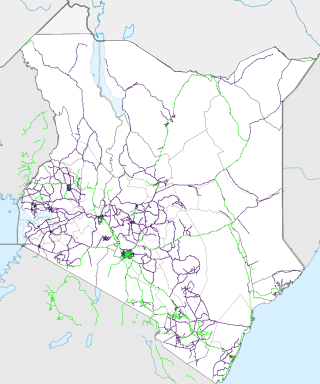
Transport in Kenya refers to the transportation structure in Kenya. The country has an extensive network of paved and unpaved roads.
Transport in Tanzania includes road, rail, air and maritime networks. The road network is 86,472 kilometres (53,731 mi) long, of which 12,786 kilometres (7,945 mi) is classified as trunk road and 21,105 kilometres (13,114 mi) as regional road. The rail network consists of 3,682 kilometres (2,288 mi) of track. Commuter rail service is in Dar es Salaam only. There are 28 airports, with Julius Nyerere International being the largest and the busiest. Ferries connect Mainland Tanzania with the islands of Zanzibar. Several other ferries are active on the countries' rivers and lakes.
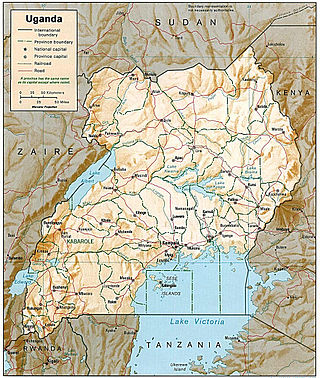
Transport in Uganda refers to the transportation structure in Uganda. The country has an extensive network of paved and unpaved roads.
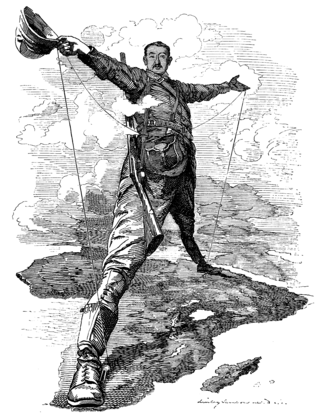
The Cape to Cairo Railway was an unfinished project to create a railway line crossing Africa from south to north. It would have been the largest and most important railway of that continent. It was planned as a link between Cape Town in South Africa and Port Said in Egypt.
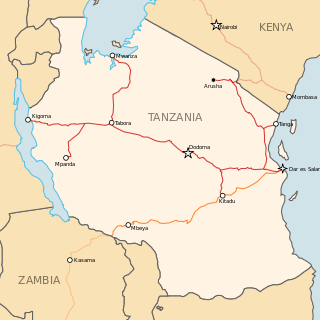
The Central Line, formerly known as the Tanganyika Railway is the most important railway line in Tanzania, apart from TAZARA. It runs west from Dar es Salaam to Kigoma on Lake Tanganyika via Dodoma. A branch leads to Mwanza on Lake Victoria.

Kenya Railways Corporation (KRC), also Kenya Railways (KR) is the national railway of Kenya. Established in 1977, KR is a state corporation.

Rail transport in Tanzania is conducted by two companies. It has historically used narrow gauge trackage, but planning and construction of new standard gauge lines is underway as of 2017.
Rail transport in Kenya consists of a metre-gauge network and a new standard-gauge railway (SGR). Both railways connect Kenya's main port city of Mombasa to the interior, running through the national capital of Nairobi. The metre-gauge network runs to the Ugandan border, and the Mombasa–Nairobi Standard Gauge Railway, financed by a Chinese loan, reaches Suswa.
Isaka is a small town and station on the narrow-gauge Mwanza railway line of Tanzania which connects to the seaport of Dar es Salaam.

Railway stations in Tanzania include:

The East African Railway Master Plan is a proposal for rejuvenating the railways serving Tanzania, Kenya, and Uganda, and building new railways to serve Rwanda and Burundi. The objective is to further the economic development of East Africa by increasing the efficiency and speed, and lowering the cost, of transporting cargo between major ports on the Indian Ocean coast and the interior.
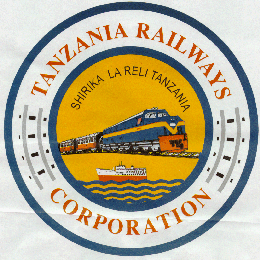
The Tanzania Railways Corporation(TRC) is a state-owned enterprise that runs one of Tanzania's two main railway networks. the Headquarters are located in Mchafukoge, Ilala District, Dar es Salaam Region.

South Sudan does not have an extensive rail system. Current rail infrastructure, which was constructed between 1959–1962, and was left over from the previous Sudan government is in a serious state of disrepair. It consists of a 248 kilometers (154 mi) narrow-gauge, single-track line that connects Babonosa (Sudan) with the city of Wau in South Sudan. The line was left in poor condition after the Second Sudanese Civil War after several parts of it were mined; the line was fully rehabilitated with United Nations funds.
The history of rail transport in Burundi is limited to a now closed industrial railway, and a number of proposed railway projects that, as of 2012, had not been implemented.

Narrow-gauge railways are common in Africa, where great distances, challenging terrain and low cost have made the narrow gauges attractive. Many nations, particularly in Southern Africa, including the extensive South African Railway network (Spoornet), use a 3 ft 6 in gauge. Metre gauge is also common, as in the case of the Uganda Railway. There used to be extensive 2 ft and 600 mm gauge networks in countries such as Morocco, Congo, Angola, Namibia and South Africa, but these have mostly been dismantled or converted. Some also survive in Egypt: in the countryside around Luxor, narrow-gauge railways are used for the transportation of sugar cane.
The Isaka–Kigali Standard Gauge Railway is a planned railway line linking the town of Isaka in Tanzania to the city of Kigali in Rwanda.
The Kenya Standard Gauge Railway (SGR) is a railway system that will connect Kenyan cities, and link the country to the neighboring country of Uganda, and through Uganda, to South Sudan, the Democratic Republic of the Congo, Rwanda, and Burundi. There are also plans to link to Addis Ababa, in neighboring Ethiopia to the north. The first segment, between Mombasa and Nairobi, opened passenger rail service in June 2017, and freight rail service in January 2018. Other segments are under construction or planned. The new Standard Gauge Railway (SGR), is intended to replace the old, inefficient metre-gauge railway system.
The Rwanda Standard Gauge Railway is a standard gauge railway (SGR) system, under development, linking the country to the neighboring countries of Tanzania and Uganda. It is intended to ease the transfer of goods between the Indian Ocean ports of Dar es Salaam and Mombasa, and the Rwandan capital Kigali. The system is expected to link, in the future, to Rwanda's two other neighbors, Burundi and the Democratic Republic of the Congo, as part of the East African Railway Master Plan. With no previously existing railway network, Rwanda is developing its railway system from scratch. The project is dependent on the constrcution of the Tanzanian and Ugandan SGR lines to the Rwandan border, which have not been completed as of October 2023.
The governments of Burundi and Rwanda have announced plans to build their first rail lines to link their countries to the rail network in Tanzania, enabling freight services to operate to the port of Dares-Salaam, Tanzania.
{{cite news}}: External link in |newspaper={{cite web}}: External link in |work=